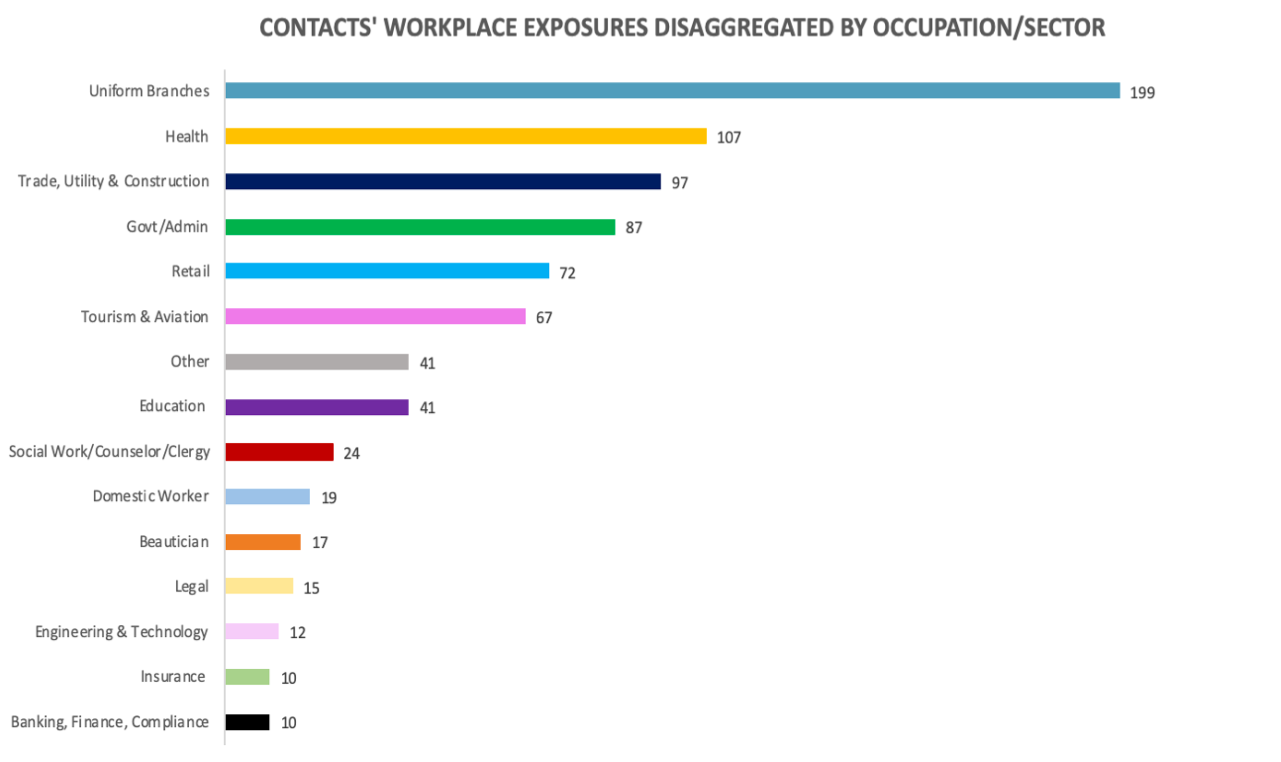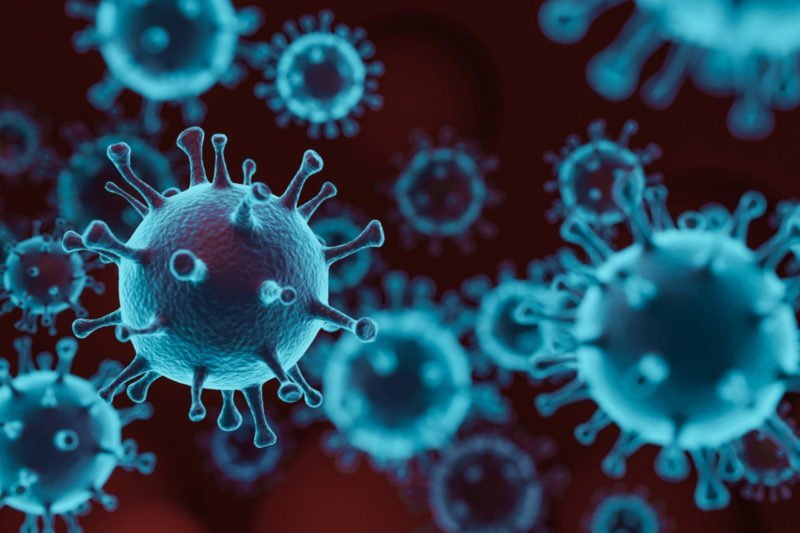Uniform branches, healthcare, trade, utility and construction account top list
NASSAU, BAHAMAS — Ongoing contact tracing shows that ‘family exposure’ and the workplace were the leading causes of contact exposure to the novel coronavirus.
The Ministry of Health provided the data during a joint press conference Monday.
According to the data, family exposure accounted for 45 percent of 840 exposure to COVID-19.

Exposure in the workplace followed, accounting for 21 percent or 393 exposures.
However, there was a large gap in the data, with 21 percent or 386 exposures without data.
‘Casual contact’ accounted for 118 of exposures or six percent, hospital or healthcare accounted for 60 exposures or three percent, and another 51 exposures or three percent were unknown.
Meanwhile, mass gathering resulted in 21 exposures or one percent. Large gatherings have largely been prohibited since mid-March, however, there have been reports of gatherings, events and parties since the state of the emergency.
While churches have been closed throughout much of the pandemic and only recently opened in ‘Phase 5’ of the government’s reopening plan at 50 percent capacity, there has been six exposure in sanctuaries, representing less than one percent of exposures.
As of last week, new emergency orders require churches to resume virtual services on Saturday and Sundays with 10 people operating from the church itself.
A breakdown of the exposures by occupation and workforce sectors revealed the uniformed branches and health — essential workers on the frontlines — were at the greatest risk, with 199 and 107 contact exposures respectively or 17 percent.

Trade, utility, and construction followed with 97 workplace exposures.
There were 87 workplace exposures in government and administration; 72 in retail; 67 in tourism and aviation; 67 in other, which was not expounded on; 41 in education; 24 in social and counselor work and the clergy; 19 among domestic workers; 17 among beauticians; 15 in the legal sector; 12 in engineering and technology; 10 in the insurance sector and another 10 in banking, finance and compliance.
A closer look at the movement of cases in second wave shows vast movement from Grand Bahama to the Abacos, New Providence and Bimini; the Abacos to Grand Bahama and New Providence; the Berry Islands to the Abacos; Eleuthera to New Providence; Cat Island to New Providence; the Exumas to New Providence; and New Providence to at least eight islands including Bimini, Grand Bahama, the Berry Islands, the Abacos, Eleuthera, Andros, the Exumas, and Cat Island.
Clusters of cases in the first and second waves also suggest a divergence in the contacts of positive cases that resulted in infections.
For example, several positive cases in the second wave had well over 40 and in some instances nearly 50 contacts that subsequently contracted the virus, compared to the cases in the first wave that had just over 20 contacts that subsequently tested positive for the virus.
One case in Grand Bahama alone had 37 contacts.
Data on the police officers in Grand Bahama during the period July 1 and August 23, showed 40 positive cases and some 51 contact exposures.
There were at least 52 confirmed cases among police officers in New Providence during the same period.
There were 11 confirmed cases in the defence force and many more exposures.
As of yesterday, there were 1,798 cases of which 1,113 were active.
A total of 634 cases had recovered.
As of Monday, there were 939 people in isolation at home, 24 in a private hospital, 45 in government isolation, and 37 cases in a public hospital.
The data also indicated 543 recovered cases were in isolation.
Another, 1083 contacts were in quarantine, six were in government quarantine.
A total of 937 contacts of cases had been discharged from government quarantine.
There were 90 hospitalized cases — up from the 83 reported on Saturday and the 87 reported on Sunday.
Among them, five were in Doctors Hospital east, 19 were in Doctors Hospital west, 21 in Princess Margaret Hospital, nine in the South Beach Health Centre; 29 in the Sandilands Rehabilitation Centre, and seven in the Grand Bahama Health Centre.
Health consultant in the Office of the Prime Minister Dr Merceline Dahl Regis, who heads the Surveillance Unit, said 72 healthcare workers had been infected with the virus.
According to the data, 18 of them were infected at Princess Margaret Hospital, 18 at Sandilands, 28 at the Grand Bahama Health Centre, one in Department of Public Health in the Family Islands, and seven in the Department of Public Health in New Providence.
The data also includes cases by age and sex.
It shows the vast majority of cases were those between 20 and 50 — 951 cases.
Of those, approximately 47 percent on average were women, while 53 percent were men.
There were 47 cases among those 10-years-old, of which 70 percent were girls; and 10 cases were infants — less than one-year-old.
There were also 103 cases among those in their 60s, 46 cases of those in their 70s, and 21 cases were individuals in their 80s.
A comparative analysis of the first wave, which spanned mid-March through the end of June, and the ongoing second wave shows older people being predominantly impacted between March and June, while the virus was spread more evenly among young and older people in the ongoing second wave.
For example, in the first wave, 46 percent of cases were among individuals age 50 through 70.
That age grouping represents 27 percent of cases in the second wave.
The data also shows visitors represent zero percent of cases, while nationals and residents account for 91 percent of cases. However, data was not available for another nine percent of cases.






